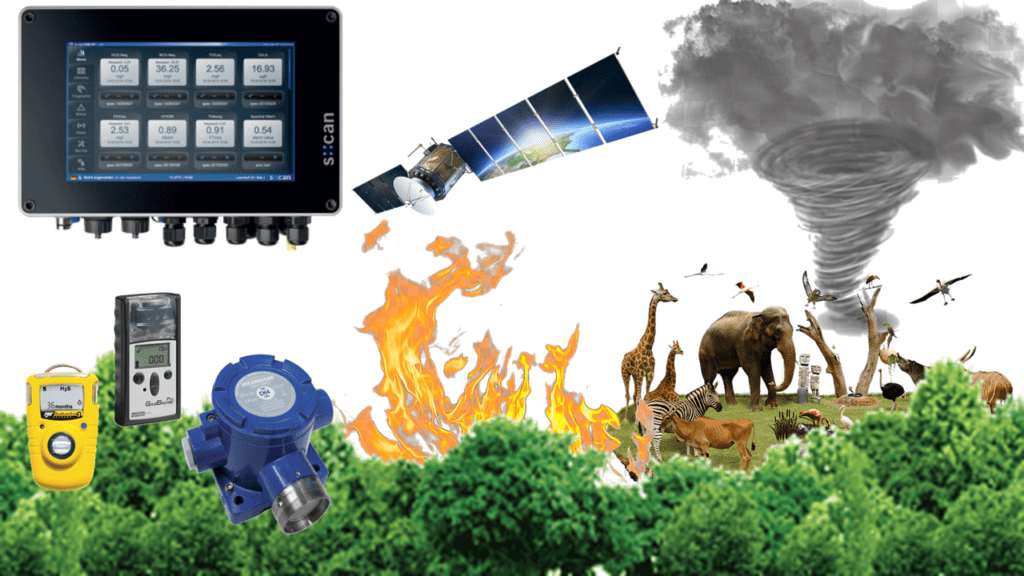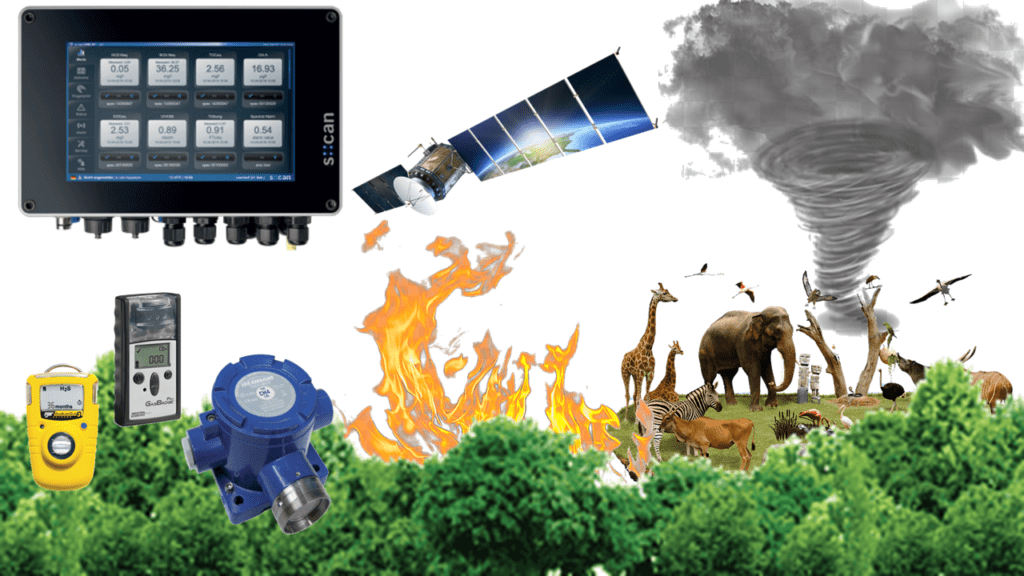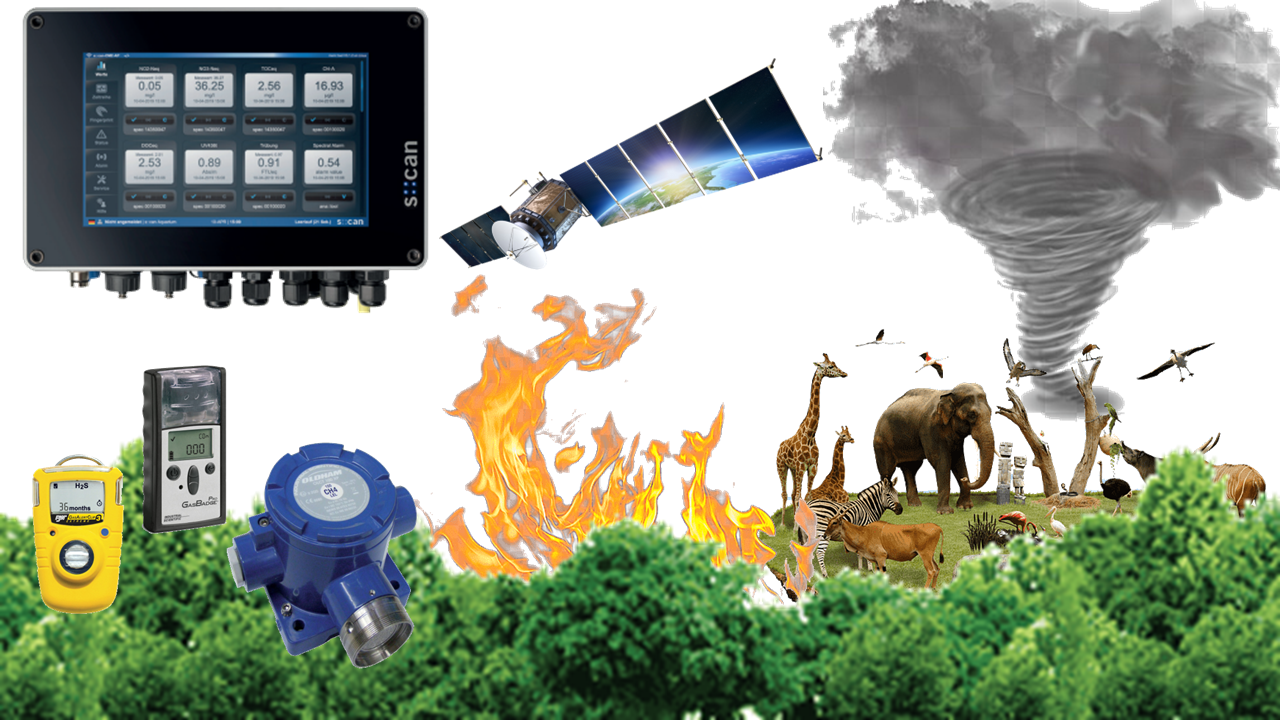Surveillance systems for Natural Resource Management today generates data and information for planning, monitoring and control of natural resources.
SAFETY CONSULTANTS & SOLUTION PROVIDERS are leaders in the protection of life, asset, environment, and business continuity in Sub-Saharan Africa. Engineering, procurement, construction, installation, commissioning, and maintenance of Fire Safety, Occupational Safety, Environmental Safety, Security, Building Management Systems, Technical Safety and Process Safety services.

Technology’s role is becoming critical at an era of growing ecological problems and the urgent need to sustainably manage resources. Surveillance systems, once associated with security and crime prevention, are now proving to be powerful tools for monitoring and managing natural resources. Surveillance systems are revolutionizing the way in which we look after conservation and sustainability by protecting fragile ecosystems, tracking wildlife populations as well as stopping illegal activities.
The Evolution of Surveillance Systems in Natural Resource Management
Traditionally, manual methods were used in the management of natural resources that often-presented limitations on coverage, accuracy and real time monitoring. The potential to monitor resources effectively has been enhanced by the advent of advanced technology, such as remote sensing, geographic information systems and satellite imagery. These technologies are now being used by the surveillance system to provide real time data and analytical tools which allow a greater understanding of decisions.
Key Applications of Surveillance Systems in Natural Resource Management
- Ecosystem Monitoring and Restoration:
Resources in land, atmosphere, water and forest ecosystems are monitored and managed via surveillance systems.
- Land monitoring and land management:
Survey and estimation of cover crop area for agriculture, urbanization, spatial planning, watershed management, population density and identifying areas for rehabilitation by using surveillance systems that are equipped with higher resolution cameras and sensors. Adaptive management strategies to protect fragile environments are created from this real time data helps to attain land use monitoring.
- Atmospheric ecosystem monitoring and management:
Remote atmospheric monitoring for composition of contaminants and pollutants, such as greenhouse gasses are done by means of satellite imagery. Atmospheric visibility is monitored in aviation for planning of transportation routes.
- Water monitoring and water resource management:
The monitoring systems can monitor the quality and level of water, as well as changes in aquatic ecosystems. This information will enable monitoring of pollution sources, management of water distribution and planning for a sustainable use of water. Water Quality Monitoring is monitored with intelligent internet-of-things having spectrometer probes for chemical oxygen demand (COD), scanning of spectral fingerprints of water based on wavelength of ultraviolet (UV) and visible light absorption with spectrometers with integrated spectral alarms, benzene, toluene, and xylene isomers (BTX), nitrate (NO3), biochemical oxygen demand (BOD), UV254, total organic carbon (TOC), total suspension solids (TSS), dissolved organic carbon (DOC), turbidity, ozone (O3), water color, hydrogen sulfide (H2S).
- Wildlife conservation:
An insight into animal behavior, migration patterns and population dynamics is provided by camera traps, drones as well as GPS tracking devices fitted to the surveillance systems. This information will assist in the development of conservation plans for animal habitat and help us to understand how humans’ activities affect it. Park rangers and wildlife biologists apply tracked sensing technology for biodiversity study and wildlife management.
- Illegal Activity detector:
In the fight against poaching, unlawful logging and other illicit activities that threaten natural resources, surveillance systems have a crucial role to play. Illegal entry to protected areas may be detected and immediately responded by law enforcement or conservation teams via intelligent sensor networks.
- Natural hazard management:
In order to avoid significant damage to the forests and ecosystems, it is very important to be able to detect forest fires before they occur. It is possible to immediately detect fire hotspots and rapidly deploy firefighting equipment through the use of surveillance systems with an infrared camera.
- Weather and climatic hazards monitoring and management:
Climatologists, geoscientists and geographers have the means of monitoring ecosystems, such as live weather monitoring and forecasting helps in climate monitoring, monitoring windstorms of typhoons, cyclones, and hurricanes; rainfall storms and flooding, snowstorms and blizzards for planning emergency responses.
- Land hazards monitoring and management:
Monitoring and management of natural hazards associated with land and land resources like – volcanic eruptions, earthquakes, tracking changes in land use, detecting deforestation, desertification is possible through surveillance technology.
- Fire detection and fire emergency response management:
In order to avoid significant damage to the forests and ecosystems, it is very important to be able to detect forest fires before they occur. It is possible to immediately detect fire hotspots and rapidly deploy firefighting equipment through the use of surveillance systems with an infrared camera.
Benefits
- Realtime data: Surveillance systems are capable of supplying an immediate update of the information, allowing a swift response to evolving threats.
- Data Accuracy: The accuracy of resource assessment will be enhanced by highly detailed imagery and sensor data.
- Cost-Effectiveness: Automated monitoring lowers the need for constant human presence in remote or hazardous areas.
- Collaborative Efforts: Surveillance data fosters collaboration between governments, NGOs, and researchers for effective resource management.
Challenges
- Data processing: Vast amount of data handling will require a lot of processing and analysis capacity.
- Privacy Concerns: In particular, areas in which local communities are located, balancing surveillance with the right to privacy is essential.
- Technical expertise: skilled personnel and resources are needed for the implementation and maintenance of surveillance systems.
- Connectivity: Remote areas may lack the necessary infrastructure for seamless data transmission.
By providing timely, accurate and comprehensive data to decision makers, monitoring systems are transforming the landscape of natural resource management. These systems are revolutionizing the way in which we can protect our planet’s essential resources, such as biodiversity protection, prevention of unauthorized activities and mitigation of environmental risks. Integrating surveillance systems with conservation strategies will undoubtedly be a key element for the creation of a more secure future, generations from now, as technology continues to advance.











